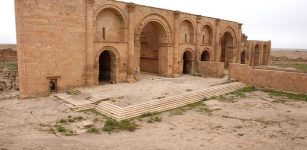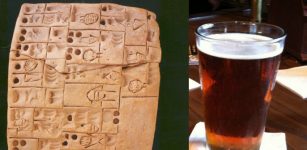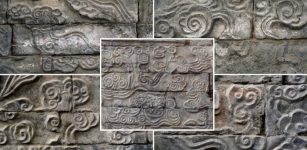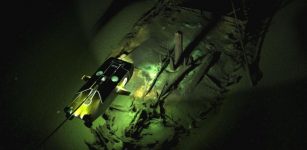LIDAR Technology Reveals Secrets Of Ancient Maya Civilization
AncientPages.com - Using LiDAR (light detection and ranging) technology researchers of Ithaca College uncovered thousands of new Maya structures previously undetected beneath smothering vegetation.
The survey of encompassed Several major Maya sites, including the largest at Tikal, and El Zotz have been surveyed and these sites cover the area of 2,100-square kilometers.
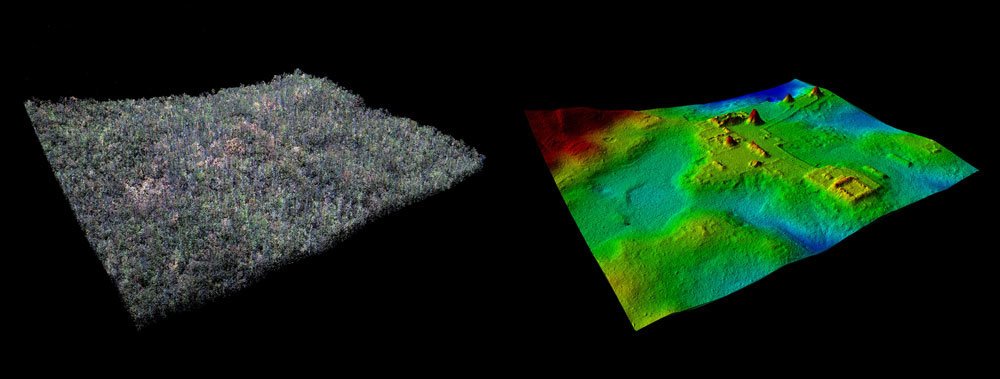
A comparison of LiDAR data showing the ancient Maya site of El Zotz covered in trees (left), and with the trees digitally removed. Image : Ithaca College
The LiDAR mapping detected more than 60,000 previously unknown structures in total, from unknown pyramids, palace structures, terraced fields, roadways, defensive walls and towers, and houses. Archaeologists are realizing that the ancient population centers they’ve spent decades studying are much bigger than they speculated.
The laser pierces through the smallest gaps in the vegetation to record the lay of the land below with remarkable accuracy. The resulting data can be tweaked to filter out the trees, thus offering an unencumbered view of everything else on the surface.
The technology is a boon for surveys in jungles like those in lowland Guatemala, where dense canopy hinders other methods of aerial survey and thick undergrowth can conceal the relationship even between known structures.
“In a swampy area of rolling hillocks rising from the muck, for example: “You have this idea that there's some little stuff on the hills, but the LiDAR lets you see it in its totality.”
See also:
Ancient Tomb Of Maya Ruler Te’ Chan Ahk Discovered In Guatemala
The Maya civilization began to emerge about 3,000 years ago, and reached its peak during the Classic Period, from about A.D. 250-900. They were known for its sophisticated hieroglyphic script, art, architecture and mathematics.
The technology is a boon for surveys in jungles like those in lowland Guatemala, where dense canopy hinders other methods of aerial survey and thick undergrowth can conceal the relationship even between known structures.
"Everyone is seeing larger, denser sites. Everyone," Garrison said. "There's a spectrum to it, for sure, but that's a universal: everyone has missed settlement in their [previous] mapping."
AncientPages.com






